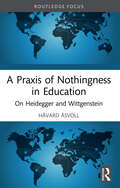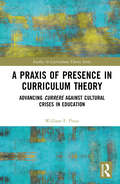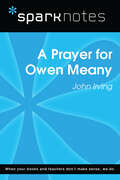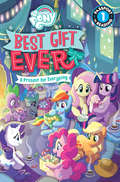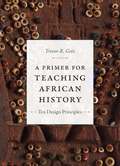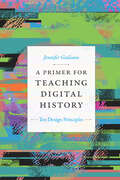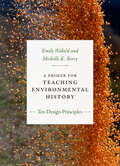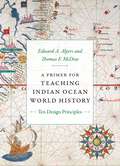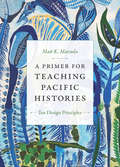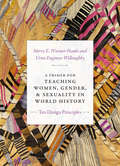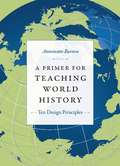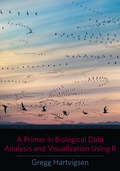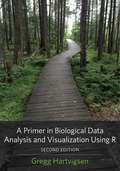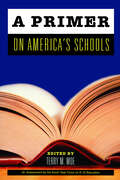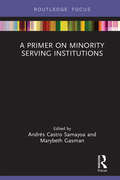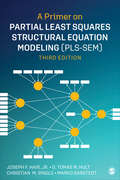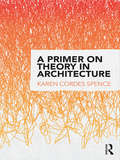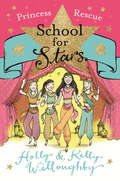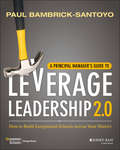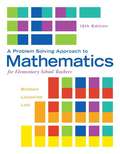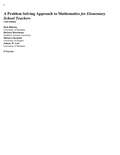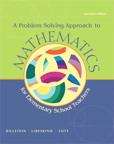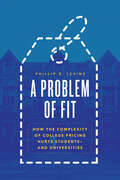- Table View
- List View
A Praxis of Nothingness in Education: On Heidegger and Wittgenstein (Routledge International Studies in the Philosophy of Education)
by Håvard ÅsvollThis book puts forward a "theory of Nothing" and shows how a praxis of "Nothing" can offer new possibilities for educational research and practice. Taking inspiration from Heidegger’s and Wittgenstein’s philosophy and with regards to phenomenology and language, the book indicates how nothing can be a condition for an educational technology. The book translates the complex philosophical thinking of Heidegger and Wittgenstein into the realm of education studies, drawing on their perspectives to contribute to an understanding of how nothingness comes into being and how this relates to education. Arguing that nothingness addresses new possibilities for understanding and how we perceive the world and our place in it, the book theorises different aspects that can be included in a theory of Nothing; including indeterminateness, embodiment and how the inexpressible can be made expressible. The book presents vignettes and examples of educational practice and explores how nothing can show up in educational research, theory and practice. Outlining a unique conceptualisation of nothingness in education, the book will be of great interest to academics, researchers and post-graduate students in the field of educational philosophy and educational theory.
A Praxis of Presence in Curriculum Theory: Advancing Currere against Cultural Crises in Education (Studies in Curriculum Theory Series)
by William F. PinarBuilding on his seminal methodological contribution to the field – currere – here William F. Pinar posits a praxis of presence as a unique form of individual engagement against current cultural crises in education. Bringing together a series of updated essays, articles, and new writings to form this comprehensive volume, Pinar first demonstrates how a praxis of presence furthers the study of curriculum as lived experience to overcome self-enclosure, restart lived and historical time, and understand technology through a process of regression, progression, analysis, and synthesis. Pinar then further illustrates how this practice can inform curricular responses to countering presentism, narcissism, and techno-utopianism in educators’ work with "digital natives." Ultimately, this book offers researchers, scholars, and teacher educators in the fields of curriculum theory, the sociology of education, and educational policy more broadly the analytical and methodological tools by which to advance their understanding of currere, and in doing so, allows them to tackle the main cultural issues that educators face today.
A Prayer for Owen Meany (SparkNotes Literature Guide Series)
by SparkNotesA Prayer for Owen Meany (SparkNotes Literature Guide) by John Irving Making the reading experience fun! Created by Harvard students for students everywhere, SparkNotes is a new breed of study guide: smarter, better, faster. Geared to what today's students need to know, SparkNotes provides: *Chapter-by-chapter analysis *Explanations of key themes, motifs, and symbols *A review quiz and essay topicsLively and accessible, these guides are perfect for late-night studying and writing papers
A Present for Everypony: My Little Pony (Passport to Reading Level 1)
by Jennifer FoxAn exciting leveled reader based on the upcoming holiday special My Little Pony: Best Gift Ever!Passport to Reading Level 1 ©2018 Hasbro. All Rights Reserved.
A Primer for Teaching African History: Ten Design Principles (Design Principles for Teaching History)
by Trevor R. GetzA Primer for Teaching African History is a guide for college and high school teachers who are teaching African history for the first time, for experienced teachers who want to reinvigorate their courses, for those who are training future teachers to prepare their own syllabi, and for teachers who want to incorporate African history into their world history courses. Trevor R. Getz offers design principles aimed at facilitating a classroom experience that will help students navigate new knowledge, historical skills, ethical development, and worldviews. He foregrounds the importance of acknowledging and addressing student preconceptions about Africa, challenging chronological approaches to history, exploring identity and geography as ways to access historical African perspectives, and investigating the potential to engage in questions of ethics that studying African history provides. In his discussions of setting goals, pedagogy, assessment, and syllabus design, Getz draws readers into the process of thinking consciously and strategically about designing courses on African history that will challenge students to think critically about Africa and the discipline of history.
A Primer for Teaching Digital History: Ten Design Principles (Design Principles for Teaching History)
by Jennifer GuilianoA Primer for Teaching Digital History is a guide for college and high school teachers who are teaching digital history for the first time or for experienced teachers who want to reinvigorate their pedagogy. It can also serve those who are training future teachers to prepare their own syllabi, as well as teachers who want to incorporate digital history into their history courses. Offering design principles for approaching digital history that represent the possibilities that digital research and scholarship can take, Jennifer Guiliano outlines potential strategies and methods for building syllabi and curricula. Taking readers through the process of selecting data, identifying learning outcomes, and determining which tools students will use in the classroom, Guiliano outlines popular research methods including digital source criticism, text analysis, and visualization. She also discusses digital archives, exhibits, and collections as well as audiovisual and mixed-media narratives such as short documentaries, podcasts, and multimodal storytelling. Throughout, Guiliano illuminates how digital history can enhance understandings of not just what histories are told but how they are told and who has access to them.
A Primer for Teaching Environmental History: Ten Design Principles (Design Principles for Teaching History)
by Emily Wakild Michelle K. BerryA Primer for Teaching Environmental History is a guide for college and high school teachers who are teaching environmental history for the first time, for experienced teachers who want to reinvigorate their courses, for those who are training future teachers to prepare their own syllabi, and for teachers who want to incorporate environmental history into their world history courses. Emily Wakild and Michelle K. Berry offer design principles for creating syllabi that will help students navigate a wide range of topics, from food, environmental justice, and natural resources to animal-human relations, senses of place, and climate change. In their discussions of learning objectives, assessment, project-based learning, using technology, and syllabus design, Wakild and Berry draw readers into the process of strategically designing courses on environmental history that will challenge students to think critically about one of the most urgent topics of study in the twenty-first century.
A Primer for Teaching Indian Ocean World History: Ten Design Principles (Design Principles for Teaching History)
by Edward A. Alpers Thomas F. McDowA Primer for Teaching Indian Ocean World History is a guide for college and high school educators who are teaching Indian Ocean histories for the first time or who want to reinvigorate their courses. It can also serve those who are training future teachers to prepare their own syllabi, as well as those who want to incorporate Indian Ocean histories into their world history courses. Edward A. Alpers and Thomas F. McDow offer course design principles that will help students navigate topics ranging from empire, geography, slavery, and trade to mobility, disease, and the environment. In addition to exploring non-European sources and diverse historical methodologies, they discuss classroom pedagogy and provide curriculum possibilities that will help instructors at any level enrich and deepen standard approaches to world history. Alpers and McDow draw readers into strategically designing courses that will challenge students to think critically about a vast area with which many of them are almost entirely unfamiliar.
A Primer for Teaching Pacific Histories: Ten Design Principles (Design Principles for Teaching History)
by Matt K. MatsudaA Primer for Teaching Pacific Histories is a guide for college and high school teachers who are teaching Pacific histories for the first time or for experienced teachers who want to reinvigorate their courses. It can also serve those who are training future teachers to prepare their own syllabi, as well as teachers who want to incorporate Pacific histories into their world history courses. Matt K. Matsuda offers design principles for creating syllabi that will help students navigate a wide range of topics, from settler colonialism, national liberation, and warfare to tourism, popular culture, and identity. He also discusses practical pedagogical techniques and tips, project-based assignments, digital resources, and how Pacific approaches to teaching history differ from customary Western practices. Placing the Pacific Islands at the center of analysis, Matsuda draws readers into the process of strategically designing courses that will challenge students to think critically about the interconnected histories of East Asia, Southeast Asia, Australia, the Pacific Islands, and the Americas within a global framework.
A Primer for Teaching Women, Gender, and Sexuality in World History: Ten Design Principles (Design Principles for Teaching History)
by Merry E. Wiesner-Hanks Urmi Engineer WilloughbyA Primer for Teaching Women, Gender, and Sexuality in World History is a guide for college and high school teachers who are teaching women, gender, and sexuality in history for the first time, for experienced teachers who want to reinvigorate their courses, for those who are training future teachers to prepare their own syllabi, and for teachers who want to incorporate these issues into their world history classes. Merry E. Wiesner-Hanks and Urmi Engineer Willoughby present possible course topics, themes, concepts, and approaches while offering practical advice on materials and strategies helpful for teaching courses from a global perspective in today's teaching environment for today's students. In their discussions of pedagogy, syllabus organization, fostering students' historical empathy, and connecting students with their community, Wiesner-Hanks and Willoughby draw readers into the process of strategically designing courses that will enable students to analyze gender and sexuality in history, whether their students are new to this process or hold powerful and personal commitments to the issues it raises.
A Primer for Teaching World History: Ten Design Principles
by Antoinette BurtonA Primer for Teaching World History is a guide for college and high school teachers who are designing an introductory-level world history syllabus for the first time, for those who already teach world history and are seeking new ideas or approaches, and for those who train future teachers to prepare any history course with a global or transnational focus. Drawing on her own classroom practices, as well as her career as a historian, Antoinette Burton offers a set of principles to help instructors think about how to design their courses with specific goals in mind, whatever those may be. She encourages teachers to envision the world history syllabus as having an architecture: a fundamental, underlying structure or interpretive focus that runs throughout the course, shaping students' experiences, offering pathways in and out of "the global," and reflecting the teacher's convictions about the world and the work of history.
A Primer in Biological Data Analysis and Visualization Using R
by Gregg HartvigsenR is the most widely used open-source statistical and programming environment for the analysis and visualization of biological data. Drawing on Gregg Hartvigsen's extensive experience teaching biostatistics and modeling biological systems, this text is an engaging, practical, and lab-oriented introduction to R for students in the life sciences.Underscoring the importance of R and RStudio in organizing, computing, and visualizing biological statistics and data, Hartvigsen guides readers through the processes of entering data into R, working with data in R, and using R to visualize data using histograms, boxplots, barplots, scatterplots, and other common graph types. He covers testing data for normality, defining and identifying outliers, and working with non-normal data. Students are introduced to common one- and two-sample tests as well as one- and two-way analysis of variance (ANOVA), correlation, and linear and nonlinear regression analyses. This volume also includes a section on advanced procedures and a chapter introducing algorithms and the art of programming using R.
A Primer in Biological Data Analysis and Visualization Using R
by Gregg HartvigsenR is the most widely used open-source statistical and programming environment for the analysis and visualization of biological data. Drawing on Gregg Hartvigsen’s extensive experience teaching biostatistics and modeling biological systems, this text is an engaging, practical, and lab-oriented introduction to R for students in the life sciences.Underscoring the importance of R and RStudio in organizing, computing, and visualizing biological statistics and data, Hartvigsen guides readers through the processes of correctly entering and analyzing data and using R to visualize data using histograms, boxplots, barplots, scatterplots, and other common graph types. He covers testing data for normality, defining and identifying outliers, and working with non-normally distributed data. Students are introduced to common one- and two-sample tests as well as one- and two-way analysis of variance (ANOVA), correlation, and linear and nonlinear regression analyses. This volume also includes a section on advanced procedures and a chapter outlining algorithms and the art of programming using R.This second edition has been revised to be current with the versions of R software released since the book’s original publication. It features updated terminology, sources, and examples throughout.
A Primer on America's Schools
by Terry M. MoeIn this volume the eleven members of the Koret Task Force on K–12 Education provide a broad overview of the American education system—pulling together basic facts about its structure and operation, identifying key problems that hinder its performance, and offering perspectives on the requirements of genuine reform.
A Primer on Minority Serving Institutions
by Marybeth Gasman Andrés Castro SamayoaMinority Serving Institutions (MSIs)—specifically Historically Black Colleges and Universities (HBCUs), Tribal Colleges and Universities (TCUs), Hispanic-Serving Institutions (HSIs), and Asian American and Native American Pacific Islander-Serving Institutions (AANAPISIs)—have carved out a unique niche in the nation, serving the needs of low-income, underrepresented students of color. Covering foundational topics relating to MSIs, chapter authors explore how salient issues across the landscape of higher education play out within the MSI context. Undergirded by national data and key literature, A Primer on Minority Serving Institutions provides graduate students, scholars, and researchers a full picture of the work and contributions of MSIs and urges them to think about MSIs as part of the larger higher education landscape.
A Primer on Partial Least Squares Structural Equation Modeling (PLS-SEM)
by G. Tomas Hult Marko Sarstedt Christian M. Ringle Joe HairThe third edition of A Primer on Partial Least Squares Structural Equation Modeling (PLS-SEM) guides readers through learning and mastering the techniques of this approach in clear language. Authors Joseph H. Hair, Jr., G. Tomas M. Hult, Christian Ringle, and Marko Sarstedt use their years of conducting and teaching research to communicate the fundamentals of PLS-SEM in straightforward language to explain the details of this method, with limited emphasis on equations and symbols. A running case study on corporate reputation follows the different steps in this technique so readers can better understand the research applications. Learning objectives, review and critical thinking questions, and key terms help readers cement their knowledge. This edition has been thoroughly updated, featuring the latest version of the popular software package SmartPLS 3. New topics have been added throughout the text, including a thoroughly revised and extended chapter on mediation, recent research on the foundations of PLS-SEM, detailed descriptions of research summarizing the advantages as well as limitations of PLS-SEM, and extended coverage of advanced concepts and methods, such as out-of-sample versus in-sample prediction metrics, higher-order constructs, multigroup analysis, necessary condition analysis, and endogeneity.
A Primer on Partial Least Squares Structural Equation Modeling (PLS-SEM)
by G. Tomas Hult Marko Sarstedt Christian M. Ringle Joe HairThe third edition of A Primer on Partial Least Squares Structural Equation Modeling (PLS-SEM) guides readers through learning and mastering the techniques of this approach in clear language. Authors Joseph H. Hair, Jr., G. Tomas M. Hult, Christian Ringle, and Marko Sarstedt use their years of conducting and teaching research to communicate the fundamentals of PLS-SEM in straightforward language to explain the details of this method, with limited emphasis on equations and symbols. A running case study on corporate reputation follows the different steps in this technique so readers can better understand the research applications. Learning objectives, review and critical thinking questions, and key terms help readers cement their knowledge. This edition has been thoroughly updated, featuring the latest version of the popular software package SmartPLS 3. New topics have been added throughout the text, including a thoroughly revised and extended chapter on mediation, recent research on the foundations of PLS-SEM, detailed descriptions of research summarizing the advantages as well as limitations of PLS-SEM, and extended coverage of advanced concepts and methods, such as out-of-sample versus in-sample prediction metrics, higher-order constructs, multigroup analysis, necessary condition analysis, and endogeneity.
A Primer on Theory in Architecture
by Karen Cordes SpenceA Primer on Theory in Architecture discusses how theory is defined in architecture, how it is identified, its location in larger perspectives or worldviews, its relationships to other areas in architecture, and how it can be constructed. The book explores the definition, elements and characteristics of theory along with subjects associated with theory and how these associations are recognized. In addition, case studies tackle both individual theorists and common approaches to the topic. Aimed at the new student of architectural theory, if you are just beginning to tackle this subject, begin with this book.
A Princess Rescue: Book 7 (School for Stars #7)
by Kelly Willoughby Holly WilloughbyTV presenter Holly Willoughby's seventh adventure written with her sister Kelly. Join schoolgirl detectives Molly, Maria, Pippa and Sally for more mystery and glamour, set in a contemporary school for the Performing Arts.When an Indian princess arrives in school she wants to stop being royal and start doing normal things - pillow fights, midnight feasts and cooking are her idea of fun. The end of term extravaganza is a bake-off competition and Bollywood style play, so Princess Ameera and the girls are in their element. But someone is trying to get the Princess into serious trouble. Molly, Maria, Pippa and Sally jump at the chance of an adventure that will solve a royal mystery and rescue the princess.This book is GLEE for 9+ and is perfect for fans of BALLET SHOES and MALLORY TOWERS.
A Principal Manager's Guide to Leverage Leadership 2.0: How to Build Exceptional Schools Across Your District
by Paul Bambrick-SantoyoBuild better schools by training better leaders A Principal Manager’s Guide to Leverage Leadership answers the question that district leaders have been asking across the country: if Leverage Leadership is a roadmap for principals on how to lead great schools, what can principal managers and districts do to support them on that path? A Principal Manager’s Guide to Leverage Leadership offers a step-by-step guide to coaching principals to the highest levels of achievement, and it is rooted in studying the most successful principal managers and districts across the country. It can be used by principal managers/supervisors, superintendents, district and state leadership, and principal training organizations to accelerate the growth of principals in your community. Used in conjunction with Leverage Leadership 2.0, this book identifies the key actions principal managers should take to create exceptional school leaders, integrating the seven levers of leadership into district culture from the principal manager on up. With a particular emphasis on the two “super-levers” of data-driven instruction and student culture, this book is packed with advice, professional development materials, and real-world videos of principal managers in action, offering principal managers a valuable resource for bringing about change. A Principal Manager’s Guide to Leverage Leadership introduces a new unifying approach that is also highlighted in Leverage Leadership 2.0: See It, Name It, Do It. It gives you the tools to See it (see models of effective practice and identify gaps), Name it (name concrete actions for improvement) and Do it (provide means to practice these action steps until a principal masters them) With A Principal Manager’s Guide to Leverage Leadership in hand, principal managers, superintendents and principal training organizations can facilitate district-wide and state-wide transformations and hasten the benefit to the students and community as a whole.
A Private and Public Faith (The\foundations Quartet: Ser.)
by William StringfellowThe author hits hard at the manipulation of religion for personal, corporate and national self-interests; and sets forth the possibility and content of a relevant and honest witness to Christ in both private and public affairs.“This is a tract. It consists of four essays about the status of religion in contemporary American society and about the condition of the churches of American Protestantism.“As I find it, religion in America is characteristically atheistic or agnostic. Religion has virtually nothing to do with God and has little to do with the practical lives of men in society. Religion seems, mainly, to have to do with religion. The churches—particularly of Protestantism—in the United States are, to a great extent, preoccupied with religion rather than with the Gospel.That, in brief, is the substance of the essays in this tract.”
A Problem Solving Approach To Mathematics For Elementary School Teachers
by Rick Billstein Shlomo Libeskind Johnny LottA Problem Solving Approach to Mathematics for Elementary School Teachers
A Problem Solving Approach to Mathematics for Elementary School Teachers
by Rick Billstein Johnny W. Lott Shlomo Libeskind Barbara BoschmansA Problem Solving Approach to Mathematics for Elementary School Teachers not only helps students learn the math - it provides an invaluable reference to future teachers by including professional development features and discussions of today's standards. <p><p> Revised throughout to prepare students more effectively for their own classrooms, the 13th Edition gives instructors a variety of approaches to teaching, and encourages discussion and collaboration among students and with their instructors. The MyLab(TM) Math course for this revision is updated extensively with new resources and features.
A Problem Solving Approach to Mathematics for Elementary School Teachers
by Rick Billstein Shlomo Libeskind Johnny LottMore than 350,000 students have prepared for teaching mathematics with A Problem Solving Approach to Mathematics for Elementary School Teachers since its first edition, and it remains the gold standard today. This text not only helps students learn the material by promoting active learning and developing skills and concepts--it also provides an invaluable reference to future teachers by including professional development features and discussions of today's standards. The Eleventh Edition is streamlined to keep students focused on what is most important. The Common Core State Standards (CCSS) have been integrated into the book to keep current with educational developments.
A Problem of Fit: How the Complexity of College Pricing Hurts Students—and Universities
by Phillip B. LevineA critical examination of the complex system of college pricing—how it works, how it fails, and how fixing it can help both students and universities. How much does it cost to attend college in the United States today? The answer is more complex than many realize. College websites advertise a sticker price, but uncovering the actual price—the one after incorporating financial aid—can be difficult for students and families. This inherent uncertainty leads some students to forgo applying to colleges that would be the best fit for them, or even not attend college at all. The result is that millions of promising young people may lose out on one of society’s greatest opportunities for social mobility. Colleges suffer too, losing prospective students and seeing lower enrollments and less socioeconomic diversity. If markets require prices to function well, then the American higher-education system—rife as it is with ambiguity in its pricing—amounts to a market failure. In A Problem of Fit, economist Phillip B. Levine explains why institutions charge the prices they do and discusses the role of financial aid systems in facilitating—and discouraging—access to college. Affordability issues are real, but price transparency is also part of the problem. As Levine makes clear, our conversations around affordability and free tuition miss a larger truth: that the opacity of our current college-financing systems is a primary driver of inequities in education and society. In a clear-eyed assessment of educational access and aid in a post-COVID-19 economy, A Problem of Fit offers a trenchant new argument for educational reforms that are well within reach.
